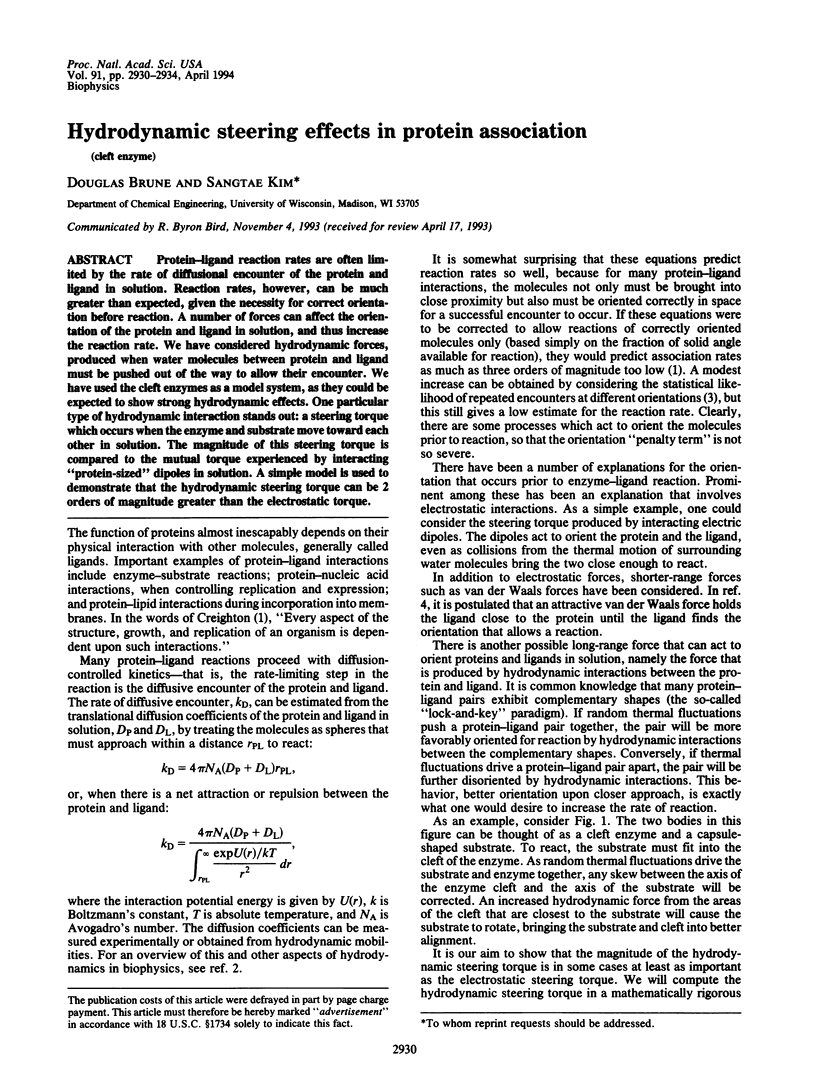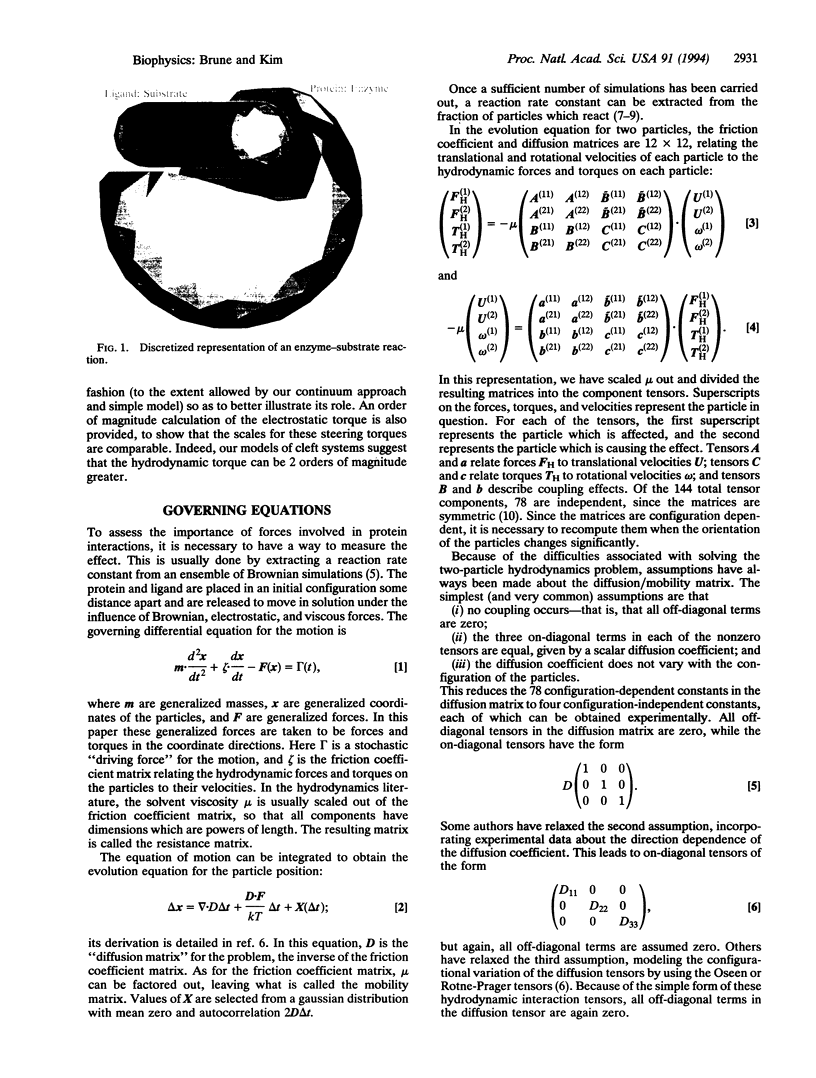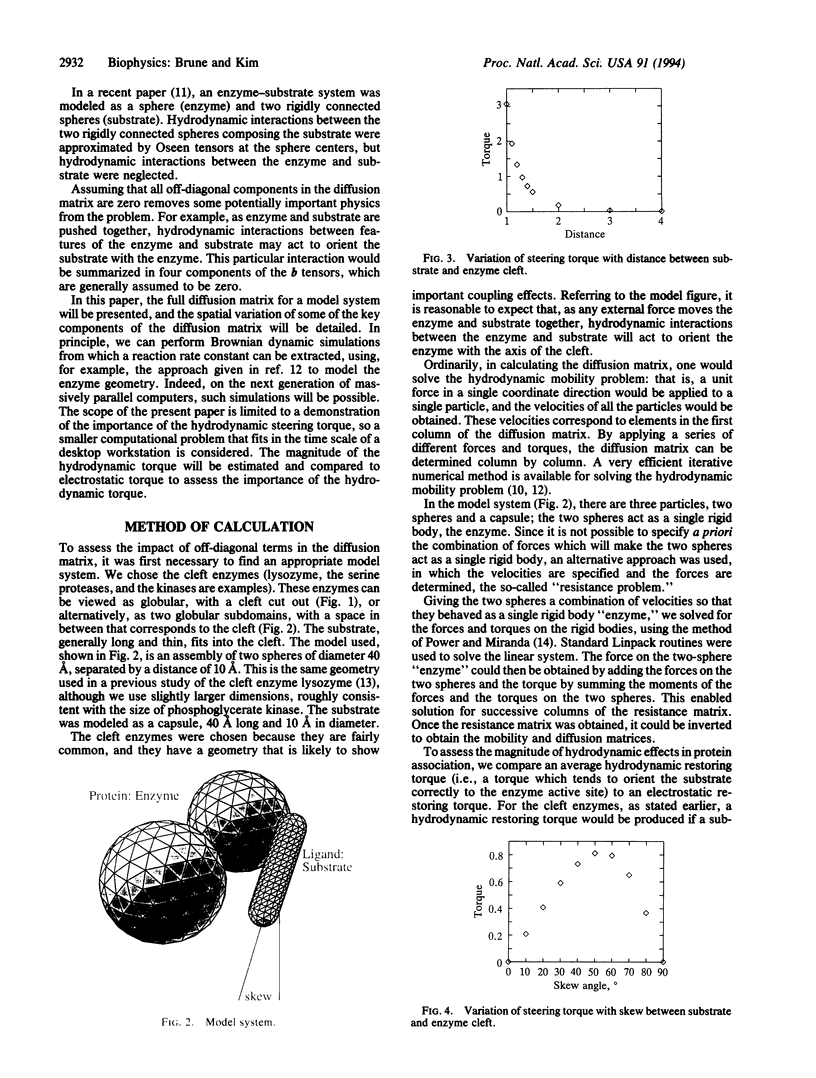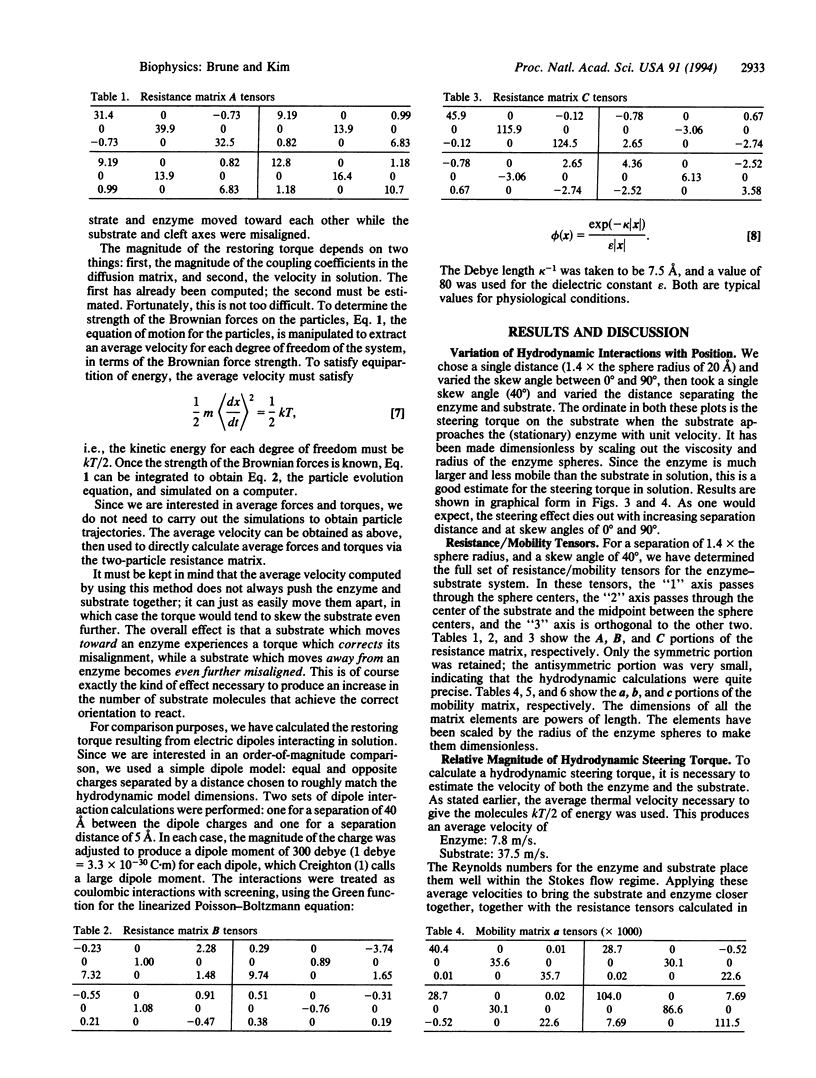Abstract
Protein-ligand reaction rates are often limited by the rate of diffusional encounter of the protein and ligand in solution. Reaction rates, however, can be much greater than expected, given the necessity for correct orientation before reaction. A number of forces can affect the orientation of the protein and ligand in solution, and thus increase the reaction rate. We have considered hydrodynamic forces, produced when water molecules between protein and ligand must be pushed out of the way to allow their encounter. We have used the cleft enzymes as a model system, as they could be expected to show strong hydrodynamic effects. One particular type of hydrodynamic interaction stands out: a steering torque which occurs when the enzyme and substrate move toward each other in solution. The magnitude of this steering torque is compared to the mutual torque experienced by interacting "protein-sized" dipoles in solution. A simple model is used to demonstrate that the hydrodynamic steering torque can be 2 orders of magnitude greater than the electrostatic torque.
Full text
PDF




Images in this article
Selected References
These references are in PubMed. This may not be the complete list of references from this article.
- Brune D., Kim S. Predicting protein diffusion coefficients. Proc Natl Acad Sci U S A. 1993 May 1;90(9):3835–3839. doi: 10.1073/pnas.90.9.3835. [DOI] [PMC free article] [PubMed] [Google Scholar]
- Garcia de la Torre J. G., Bloomfield V. A. Hydrodynamic properties of complex, rigid, biological macromolecules: theory and applications. Q Rev Biophys. 1981 Feb;14(1):81–139. doi: 10.1017/s0033583500002080. [DOI] [PubMed] [Google Scholar]
- McCammon J. A., Gelin B. R., Karplus M., Wolynes P. G. The hinge-bending mode in lysozyme. Nature. 1976 Jul 22;262(5566):325–326. doi: 10.1038/262325a0. [DOI] [PubMed] [Google Scholar]




